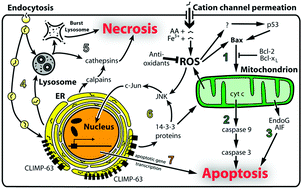Intracellular mechanisms of aminoglycoside-induced cytotoxicity
Abstract
Since introduction into clinical practice over 60 years ago,

* Corresponding authors
a
Oregon Hearing Research Center, Oregon Health & Science University, 3181 SW Sam Jackson Park Road, Portland, Oregon, USA
E-mail:
karasawa@ohsu.edu
Fax: +1 503-494-5656
Tel: +1 503-494-2373
Since introduction into clinical practice over 60 years ago,

 Please wait while we load your content...
Something went wrong. Try again?
Please wait while we load your content...
Something went wrong. Try again?
 Fetching data from CrossRef.
Fetching data from CrossRef.
This may take some time to load.
Loading related content
